Today we have the second of a three-part guest series by Seth Cane on the Galil rifle. Today he looks at the Galil AR…
Galil AR
by Seth Cane

The Galil AR was the standard-infantry model of the Galil produced by IMI. The AR was, in a nutshell, a down-sized ARM model. Early production took the wood handguard assembly (and later plastic) and Gas Block from the SAR while retaining the barrel, Gas Piston and Cylinder from the ARM. As with the other three, there was no bayonet-provision and was offered in both 5.56NATO and 7.62NATO, with the former being more popular.
The AR remains as being the less-recognizable of the three base-models. The reasoning for this is that the AR, while having all the necessary functions of a basic infantry-rifle, didn’t have the flexibility of the ARM nor the compact size of the SAR to make it attractive. That, and it was never adopted by the IDF in significant quantity.
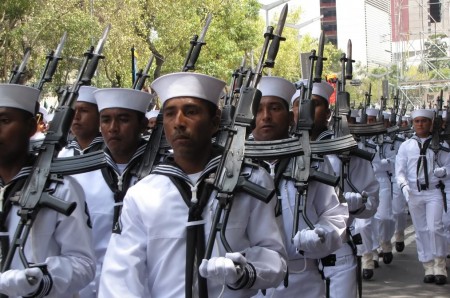
However, the AR did not become a failure in the least. One major-order in the beginning was by Guatemala; the regime at the time cooperated well with the Israeli government and brokered armament purchases from IMI. All three Galil models were reportedly shipped, but the majority were modified Galil AR rifles, dubbed the KEL. The KEL was restricted to Semi-Auto only, with the exception of those for use by special-forces. For reasons not yet clear, the Guatemalan government chose to locally-produced the handguards for the rifles using (presumably) slave-labor. During the Guatemalan civil war, the KEL saw widespread usage both by the government and rebel forces.
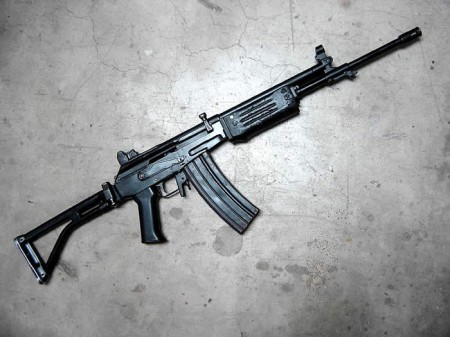
Farther south, the AR made its biggest-splash in the harsh climates of Colombia. INDUMIL, the state-run arms manufacturer of Colombia, licensed IMI to produce the AR locally in its own configuration for the Colombian military. Early models used a new gas block with integrated bayonet mount amongst other small changes. Later on, the gas block would be changed to ARM variation with integrated bipod mount.
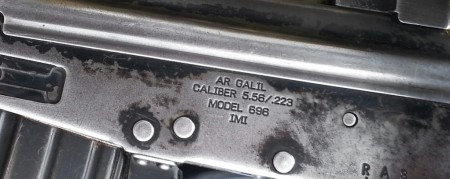
One final place the AR found success was with the American civilian market, albeit in semi-auto form. Before the import-ban of 1989, the AR was the most popular of the models offered for civilian sales. The demand for the AR over the ARM was so great, that the initial importer Magnum Research began converting ARM models over to AR configuration through the use of conversion-kits.

While not being the most well-known, the Galil AR has proven to be a practical and rugged design both to soldiers and sportsmen throughout the world.


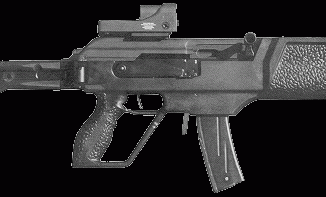
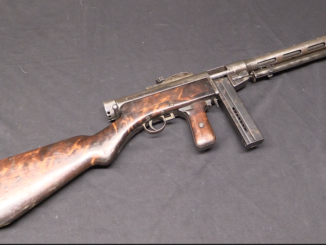
Seth,
What about the rifles carried by the Mexican sailors in the photograph. I notice they have bayonets mounted, were they produced locally?
http://www.knesset.gov.il/guard/images/dept_honor_guard_big.jpg
The israeli parliament guard also use to carry the Galil, with a bayonet for ceremonial duties…
The M-16 bayonet fits. No need to make them locally.
Love that photo of the sailors in their whites. As a Marine friend likes to tease me “There are two things that sailors are genetically incapable of… marching and handling firearms.” Not so sure about the gun thing (at least in my case) but the Navy contingent “marching” in the Veterans’ Day parade is generally pretty hilarious compared to the Army and Marines.
But the whites reminded me of how every Wednesday was “Uniform Day” where unless you were working on the piers in Lower Base you were required to wear a “casual dress” uniform instead of dungarees or utilities from 0800 to 1600. During the summer this was either whites or the 70’s “salt and pepper” uniform of black trousers, white short-sleeved shirt with crow and ribbons, and that idiotic “Dan Dan The Milk Man” billed hat. And on Wednesday the New London chow hall would always serve spaghetti with a watery tomato meat sauce, so that you had hundreds of submarine sailors walking around all afternoon in red-and-white polka-dotted uniforms. No one has ever accused Navy cooks of not having a sense of humor…..
This is the first time i see a bayonet mounted on a Galil.
I owned a Galil SAR. It’s a well built rifle.
More info about the bayonet would be welcome.
This looks nearly identical to South-African R4; it also looks very close to Valmet M76 (which probably would be my preference). Hard to imagine more common sense rifle in classical format.
One item though I’d object to is location and shape of charging handle; I’d called it not very smart, although I can see why it is vertical. In general I have gone thru a ‘conversion’ of sort when comes to charging handle location for right-handed user. Because of my own training experience (with Vz.58) I considered location at right side to be correct and natural. Last couple of years however, seeing many people doing it the other way seems to me quite acceptable and even meaningfull.
The R4 was licensed from IMI by the SA government.
Not a single mention of caliber? Not all were 5.56mm. The Colombians especially used the 7.62 NATO version.
Caliber mentioned in THIRD sentence.
Damn, Denny, here for years I’ve ben playing on “well, I can shoot a decent group with a civilian AR-15 but I don’t really know anything about the M-16… I was in the M-14 Navy” squid-vet thing. (Actually, based on my Navy experience when it comes to 5.56 rifles I much prefer the Mini-14 to the AR!) And here I run into guy from the old school of Czechs and balances who did his service with a Vz. 58. My M14 toting, 1911 wearing, submarine-dolphin-embossed cap is off to you, sir!
I know Jim, you like that pure mechanical action, like me!
How it is the photographed galils here all have bayonet lug?
Yes, that is what I’m interested in learning.
The bayonet lug is normal.
A lot of export models, and copies, don’t have the lug to conform to various local laws.
Here’s a few answers to the many questions appearing here:
-How it is the photographed galils here all have bayonet lug?
I realize I alluded to the changes in Gas Block design this in the ARM and AR articles (this will be corrected). In the late 1980’s, the Gas Block design for all three models was changed to the Type-2 variation. The Type-2 was redesigned with a bayonet lug integrated into the casting. Prior to this change, a separate Bayonet Lug would have to be machined and pinned to the barrel if the contract ordered it (which a number of foreign nations did).
-The Colombians especially used the 7.62 NATO version.
This is incorrect. The main-stay of the Colombian military is the 5.56 NATO version as produced by INDUMIL.
-More info about the bayonet would be welcome.
The intended bayonet to be used was the M7 or M16 bayonet.
-The israeli parliament guard also use to carry the Galil, with a bayonet for ceremonial duties…
The first Galils purchased and used by the IDF did not have bayonet provisions. The Galils you see by the Israeli Parliament Guard use the Type-2 Gas block which had a bayonet lug integrated.
-What about the rifles carried by the Mexican sailors in the photograph. I notice they have bayonets mounted, were they produced locally?
The Mexicans, as you may know, have a real mix-mash of weaponry used by their branches of service. The ones you see in the photograph are what I believe to be IMI-produced rifles using the Type-2 Gas block and Type-1 Stock. Most contract rifles produced by INDUMIL use the later generation Plastic stock assembly (Type 4) and ARM Type-2 Gas block.
Hi Seth
I have little sub-question, if you do not mind. The Mexicans have used quite a variety as you point out, in the past. I was there in early 80’s and recall seeing FALs with military-police force. Also I believe they used G3s. Would you have any insight into that and what was percentage of Galils (if in 7,62) in overall number? Thanks.
Seth,
Thanks for the informative answers.
I purchased a Galil ARM in 1984 ( and legally converted it to full auto via an ATF Form 1 ). It was a Magnum Research import, with IMI marks on the receiver as well.
It was imported with the Type 2 lug, so that mod dated a bit earlier than the late 1980s.
Indeed, the exact date the Type-2 was full implemented is uncertain.
In rare cases, Magnum Research did import some ARM’s with the Type-2, though you will note that Action Arms (who imported them after) still used Type-1 Gas blocks in their imports, so it is also uncertain when all production was changed.
Denny
The Galil tends to appear in Mexican police/special forces as well as the Navy, though not in great numbers (both are being replaced by the ACE, if I remember correctly). They certainly do not match the numbers of HK-G3s in service with Mexico. The only 7.62 Galils I have found there were seized from the cartels.
The 7.62mm variation does not see much usage in Latin America (Some Colombian special forces use them, but the 5.56mm version is far more common in regular army). In Africa, Dijibouti and Botswana use 7.62mm version of the AR with a few other nations using it in reserve/auxiliary roles.
yesterday i got my hands on a galil ace assault rifle and i had the opportunity to talk a long time with a memember of the colombian GAULA wich is a special group focused on figthing kidnapping and extortion.
he was armed with a galil ACE 21 and a m92f american made pistol, wich he both let me handle without ammo (wich is a lot considering how hermetic the colombian armed forces can be) the rifle felt a little bit unbalanced thanks to the polimer stock but it had good ergonomics, the trigger was ligther than the one found on the old galil, the sigths were… well a ripoff of the basic A2 open sigths, with two small (very small) fluorecent dots to make them suitable for low ligth usage, other controls are pretty much the same found in the basic galil with minor modifications.
for my taste the rifle was a bit heavy and it felt kinda flimsy (some plastic parts were held on place with ductape)
i asked its user about the diferences betwen this rifle and the old galil, he scratched his head and said “well they are good weapons but this one is not as strong as the old one, the stock is quite fragile” as i examinated the rifle he gave a second answer to the same question “well to be fair, this one is ligther and its shorter, it is more confortable to use, has less felt recoil and it much more accurated” as he said so, another GAULA member approached us only to say how much more accurated the ACE was compared to the old galil “with the old galil it was hard to hit a human torso a 250 meters, even in prone position you would get 5-6 hits of 10 shots, with this one every single shot is a hit” another memeber said from a far “the bullet just goes straight to the mark, if you can put the front notch on the target you can hit it” then i asked for their opinions on the 5.56 cartridge, all but one said they prefered the 5.56 over the 7,62 nato, most of them becouse it was ligther, more controlable and deadlier “if you get shot with a 7,62 the bullet leaves a nasty hole in your back, but you can still move and shot with it in the rush of battle, the 5.56 in many cases doesnt leave the body and if it does it leaves all your internals twisted up thats why i preffer the 5.56”
the oldest of all of them told looked at me and said with a little smile on his face “well man, it doesnt matter if you throw 5.56 or 7,62, the only thing that matters is if you can hit your target, and i mean a good hit, you can hit some one in the chest with a 7,62 and he will keep shoting, and running for some time, belive i have seen it, but if you hit someone with a 5.56 in the head he will stop moving no matter what, and that why i like the ace, it hits where i want to hit just like the old G3 did, but it is not such a burden”
we spend a lot more time talking about other firearms and experiences… but that was the most interesting part of our conversation, it seems the old galil (ar, arm and sar) was a pretty sturdy piece of hardware but its accuracy let a lot to be dessired…
thanks for reading and sorry for the bad english
the sights on the older galil were horrible. the rear sight would get knocked out of adjustment every time the rifle was dropped/hit somthing/sneezed on. That is because it was on the dust cover which is not really that well fitted to the lower. You were never really zeroed in with the Galil, to the point that I gave up on zeroing the one i carried. Other than that issue, it is a fine weapon, can withstand basically any abuse, feels good in your hands, compact(the short version that is), 35 round mag…what else can you ask for 🙂
Guatemalan 5.56 F.A. Galil (IMI) GUAT KEL SAN
http://sheepdogconcept.com/guat/